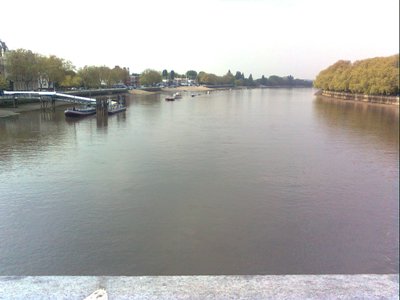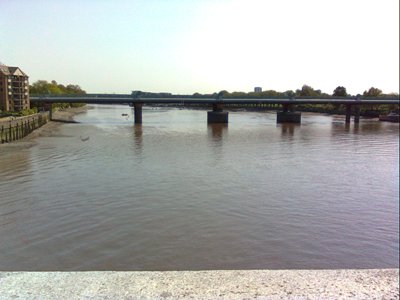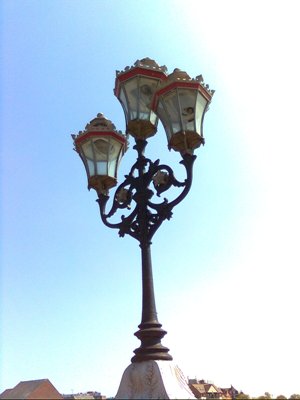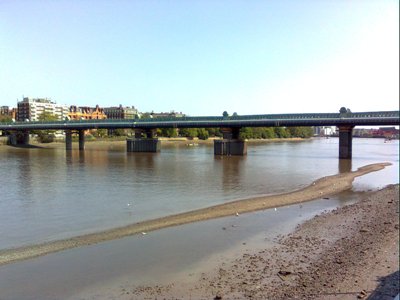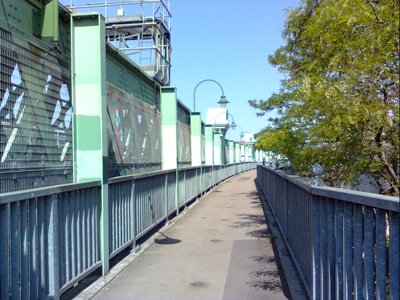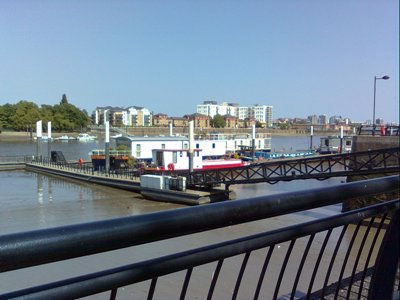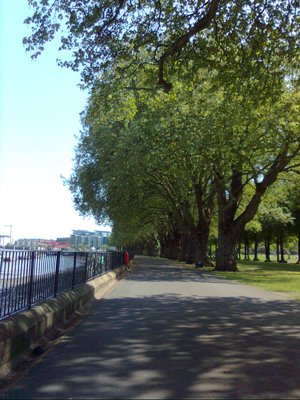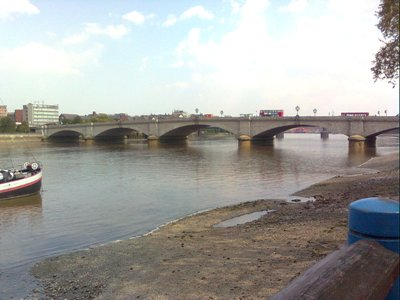
The present Putney Bridge replaced the wooden Fulham Bridge which was built in 1729. It was built slightly upstream of the old bridge and opened in 1886. It consists of five segmental granite arches. In 1933 it was widened. The stonework on the downstream side was removed, the piers and roadway widened, and the stonework replaced so that the bridge retained its appearance. Also at that time the original three-branched gas lamps were replaced and are said to be among the finest on any of the London bridges. In 1795, after learning that her American lover had been unfaithful, the feminist writer Mary Wollstonecraft attempted to end her life by jumping off the bridge into the river but luckily was saved by two passing watermen. She later married William Godwin and sadly died shortly after giving birth to Mary Shelley who was to become famous for authoring the story of Frankenstein. Just downstream of Putney Bridge stands a railway bridge which is now only used by the District Line of the Underground system. It was opened in 1889 and consists of eight spans of wrought iron lattice girders including one land span on the south side and two on the north bank. There is a pedestrian footbridge attached to the downstream side. When the bridge was repaired in the period 1995-97 a plaque put on it to mark its refurbishment refers to it as Fulham Railway Bridge although it has never been known by that name and is usually simply called Putney Railway Bridge. |
